With archives damaged, Appalshop must work quickly to restore history. There’s a way to help
The lowest point inside Appalshop, a dark wooden three-story building perched on the edge of the Kentucky River’s North Fork in downtown Whitesburg, is its archival vault.
When historic volumes of water caused swollen and rushing creeks to crest their banks across swaths of Eastern Kentucky in late July, killing 43 people and washing away countless houses and personal belongings, muddy waters, too, flooded the entire first floor of the building Appalshop has called home since 1982.
The regional arts and culture hub’s archival vault is on the west side of the building, closest to the meandering North Fork. Internationally known, Appalshop’s archive is the nation’s largest repository of central Appalachian cultural history. Late into the night on July 27 and into the following morning, the climate-controlled vault filled with water like the engine room in a sinking ship.
Water crested at nearly seven feet inside the vault, a height that today is marked by a sharpie line with the scrawled notation “high water.” It was high enough to completely submerge and contaminate thousands of archival items that were organized on eight-foot-tall shelves, including reels of film, original photographic negatives, audio recordings, writings, sheet music, instruments and artisan crafts, all documenting a rich pastiche of Appalachian culture.
On a rainy early December morning, Roger May, standing at six feet four inches, extended his arm to touch that line above his head. The vault was dark, like the rest of the building, so he lit his way with light from a cell phone. Across the room, just above the vault’s entrance, was a long crack extending beyond the length of the door frame, a reminder of the floodwaters heft.
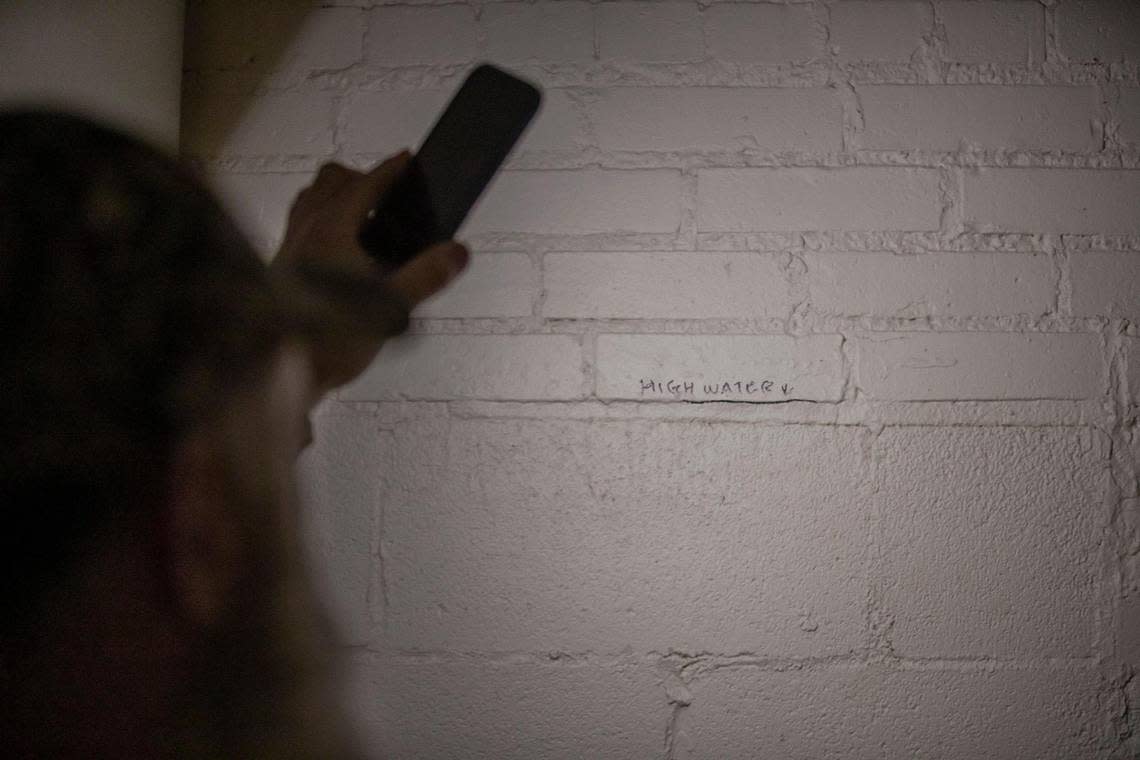
In the months since, Appalshop’s first floor, which housed the vault, the studio for WMMT 88.7 FM, an instructional room crowded with teaching fiddles, banjos and mandolins, and 150-seat theater, has been stripped down to the studs.
“It’s a skeleton,” May said.
Electricity and plumbing are turned off. The elevator is stationary, its door half-propped open. Even though professional cleaning crews gutted the ground floor, an acrid, rancid smell lingers.
The end of December marks five months since the floods. But Appalshop, like many homeowners and businesses in the region, is only just embarking on a multi-year slog of a recovery and what’s guaranteed to be the costliest endeavor the organization has faced in its almost 55-year existence.
Within weeks of the floods, Appalshop sent a portion of its damaged audio and video recordings to expert restorationists in Maryland and New Jersey. Cleaning of those items is expensive, as is digitizing.
“I could easily say the cost of our recovery is going to be in the millions,” said Daryl Royse, Appalshop’s financial director. “The archive recovery itself and the restoration of film and sound recordings is going to be in the several millions of dollars.”
Then there’s the building.
Appalshop has flood insurance on its buildings — the Boone building across the street, home of the Appalachia Media Institute, was also irreparably ruined — but staff have yet to receive money from the Federal Emergency Management Agency. Even when those funds do come, a bigger question looms: What will Appalshop’s physical space look like in the long term?
“We may end up back there, we may not. We don’t know yet,” Royse said from the basement of a former bank in downtown Whitesburg — one of two spaces Appalshop is leasing to house staff and store some of its archive material.
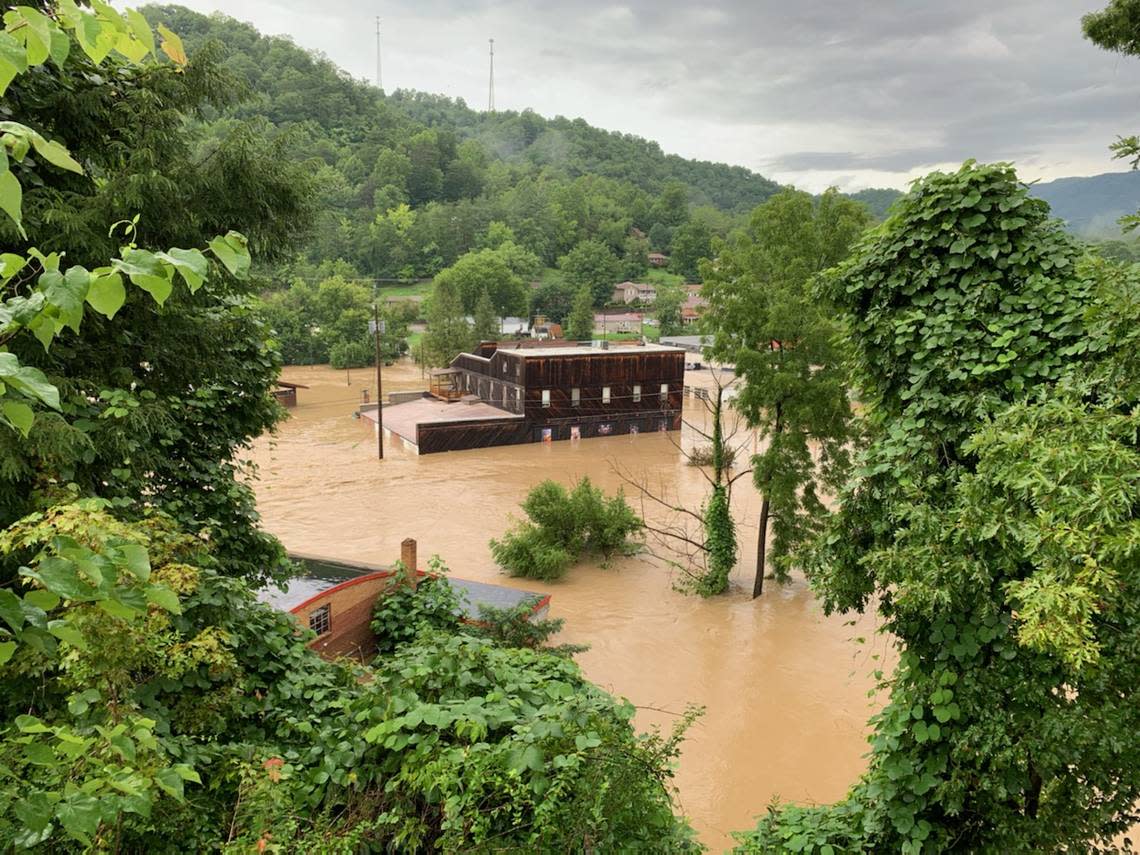
The organization is in talks with FEMA and an architect about the possibility of retrofitting the building anew to remain on the property, which is in a floodplain. But staff are actively deliberating whether that’s a worthwhile investment, Royse said.
Even with money from FEMA, recovery costs are sky-high and mounting, which is why in early 2023, Appalshop will launch a capital campaign to pull in longer-term donations from heavy-hitting donors.
“People that have the resources are choosing several paths: one is to leave, because they cannot see a path forward here,” Royse said. “Another is putting it back together the best way we can. People are searching for a path forward, the answers are just slow.”
A ‘very urgent situation’
In the days immediately following the floods, staff and volunteers tramped through muddy sludge deposited by receding waters and pulled out Appalshop’s archival collection piece by piece.
The initial goal was to dry sopping items out, which they began to do by laying each piece under the building’s adjacent outdoor solar panel pavilion, where Appalshop regularly hosts live musical performances.
Many items were a complete loss, including a motion picture film scanner Appalshop had purchased just months before the flood with a National Endowment for the Humanities grant to digitize many of its original film and audio recordings. Caked in dry mud, it’s still sitting in the vault today.
Other items recovered from the wet vault have since been scattered: some are shelved in temporary office space in the former bank building’s basement downtown; many of Appalshop’s audio and video tapes are sitting in another rented space on Main Street curated by constantly-running industrial dehumidifiers to keep them dry; photo negatives and other videos are being stored in smaller freezers in that leased space; and many of the organization’s paper products and books are bagged and frozen in a cold-storage truck on the back of Appalshop’s property. Cold temperatures halt further deterioration until archivists can devote time and attention to restoring each piece.
In addition, thousands of reels of film, videos and audio material were shipped to labs in New Jersey and Maryland for thorough cleaning, Appalshop’s lead archivist Caroline Rubens said.
Early feedback from both labs has been promising, Rubens said. But Appalshop won’t know the full scope of what’s recoverable from those labs likely for months. These pieces also don’t include those in cold storage, some of which are irrevocably damaged — an especially heavy gut punch because many hadn’t yet been digitized.
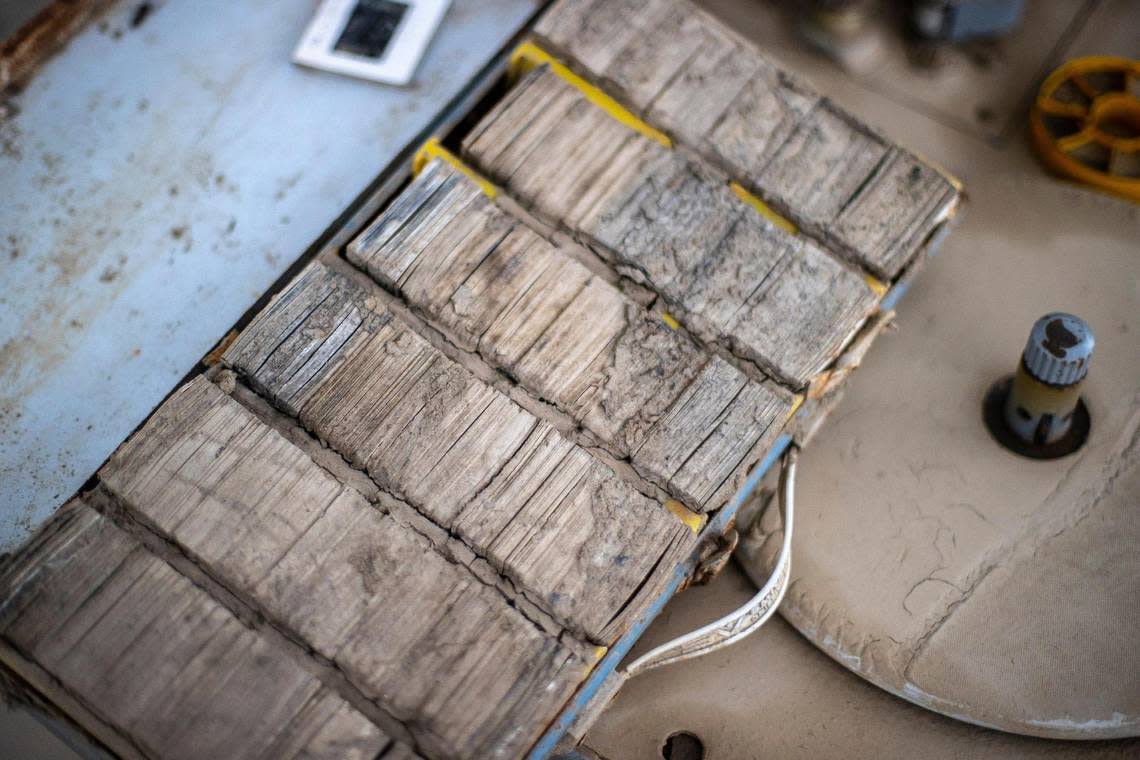
Staff were in the process of digitizing many of the film and magnetic media archives, which included about 3,000 photo negatives from William R. “Pictureman” Mullins dating back to the 1930s through 1950s, Rubens said. Born in southwestern Virginia, Mullins was a self-taught photographer who made a habit of going house to house on Sundays asking to take portraits of his neighbors dressed in their church clothes, Rubens said.
In the early 20th century, when most of the photographers documenting central Appalachia didn’t live in the region, Mullins, who eventually opened a studio in Eastern Kentucky, was an outlier. In late July, “we were in the middle of the digitization process — we’d gotten through maybe a fourth of the collection — and they got flooded,” Rubens said. “Some of the negatives are OK, but some are just gone.”
That collection is in freezer storage in Whitesburg, waiting on funding to be sent to a photo conservatory to see which ones can be saved and then simultaneously digitized, she said.
This is Appalshop’s larger plan over the next year — in addition to the monumental and expensive task of cleaning, the organization is aiming to correspondingly digitize most of its material, which is yet another costly endeavor.
The estimated cost for digitizing every reel of film sent out of state is about $2.8 million, Rubens said. On top of that cost, Appalshop’s 2,500 or so videotapes sent to out-of-state labs will cost around $300 to clean and respectively digitize, which will add another $750,000 needed for archive recovery.
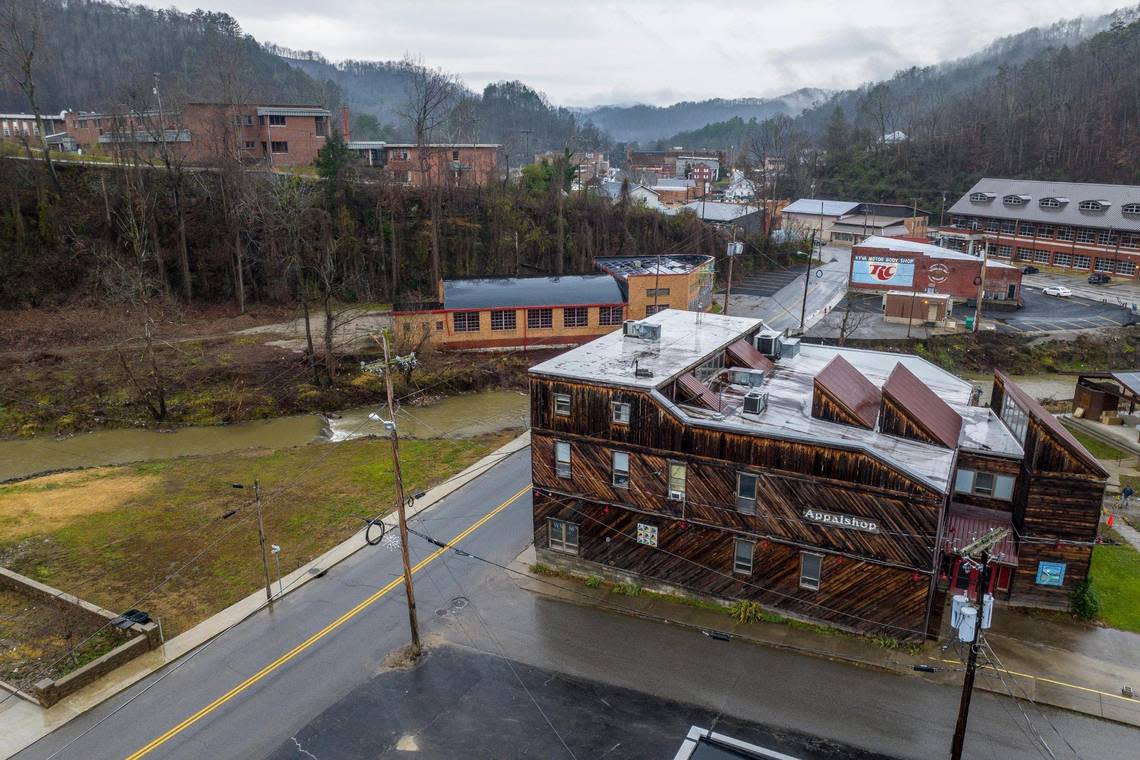
Those costs don’t count restoration of the video and audio recordings Appalshop still has in cold storage in Whitesburg, or the renovation of the original building or expenses needed to outfit a new one.
Though time is of the essence — reels of film, for instance, have to be stored in cool, wet conditions until they’re cleaned, but if left in that state too long, they’ll degrade irrevocably — coming up with the money fast is the biggest barrier, Appalshop staff interviewed for this story said.
“If it took us two years to raise $2 million, by that point there’s a low chance that any material will be salvageable,” Rubens said. “It’s a very, very urgent situation.”
Some materials have already been salvaged, including a portion of the 4,000 open-reel audio tapes, which were quick to develop mold. But after a thorough cleaning, “they sound great. You wouldn’t think there had been anything wrong with them,” Rubens said.
“So, the potential for salvaging audio tapes right now, with the information I have, I have a lot of optimism about that,” she added.
To steadily fund cleaning and digitizing of this portion of the archives, Appalshop is applying for a number of different grants ranging from $5,000 to $30,000, which would get them started, Rubens said. But the heftier six-figure federal grants they’re also applying for wouldn’t come for months, which is why, in the meantime, Appalshop will continue fundraising and looking for private donors.
“We just want to digitize as much as possible as soon as we can,” Rubens said, though it’s contingent on money. “If we can successfully over the next year get these materials cleaned and digitized, we’re going to have an unprecedented collection of digital media to make accessible. That’s the light at the end of the tunnel.”
As for the possibility of not finding the money, “I don’t think we’ve fully sat with the thought of, ‘what if we can’t?’” said Nicole Smith, Appalshop’s administrative director and communications manager. “We’re going to find it.”
‘How can we be a model’
Back at Appalshop in early December, as the rain was letting up, Shane Terry climbed inside an RV parked on the back of the property.
The organization acquired this RV in September, and Terry, operations coordinator for Appalshop, began gutting the interior shortly thereafter, eventually refurbishing it into a mobile radio studio for WMMT 88.7 FM. Previously on the first floor of the building, the studio and its equipment were destroyed beyond repair in the flood.
“We kind of just built this from scratch,” Terry said, motioning to the ad hoc set up that he installed by hand as The Stanley Brothers’ “How Mountain Girls Can Love” reeled in the background.
WMMT has been able to broadcast music and programming for months, but the station still hasn’t restored its live programming, including its on-air DJs.
“We still don’t have live DJs to actually talk to the community, and that’s what I want so bad,” said Terry, who was hoping to make the trek up a nearby mountain before the end of the year to install the transmitter and bring the station fully back on air.
While Terry hopes WMMT will again operate out of a brick and mortar studio, being mobile has its benefits. “If we have another flood disaster and we see the water rising and we get a little bit nervous, we just unhook our transmitter cable, hit the road and get out of here,” he said.
This inventive means of adapting, though maybe not sustainable long term, is indicative of how Appalshop is charging into its uncertain future.
Though the organization isn’t seriously considering leaving Whitesburg, the organization’s home city since it was founded in 1969, the question of relocating has cropped up, particularly in a mountain town shrouded in floodplains.
“The thing about staying or leaving was that early on, there was fear around not having a choice of whether or not we stayed,” May said. When it became clear the organization would have a choice, albeit a hard one, the hinted at answer slowly revealing itself is an extension of the organization’s ethos: resiliency.
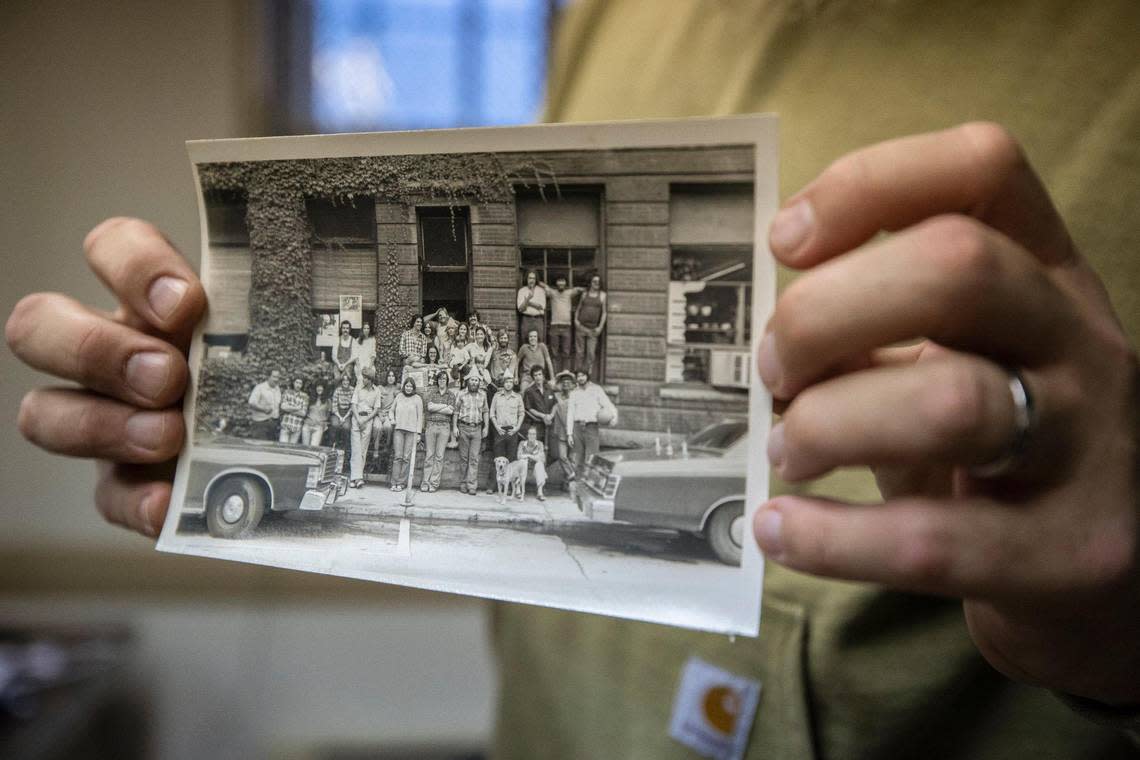
“We recognize what the challenges are to be here, and we want to be able to help folks navigate that as we navigate it,” Royse said. “We’re not leaving.”
“Will it look the same? I doubt it; we’re clearly in a flood plain,” May chimed in. But “what would it say to our community and to the stories we’ve told and voices we’ve amplified to just pull pitch and leave? We’ve been in this community longer than I’ve been alive, and there’s something to say about that.”
To donate to Appalshop’s flood recovery, visit www.appalshop.org/donate.
